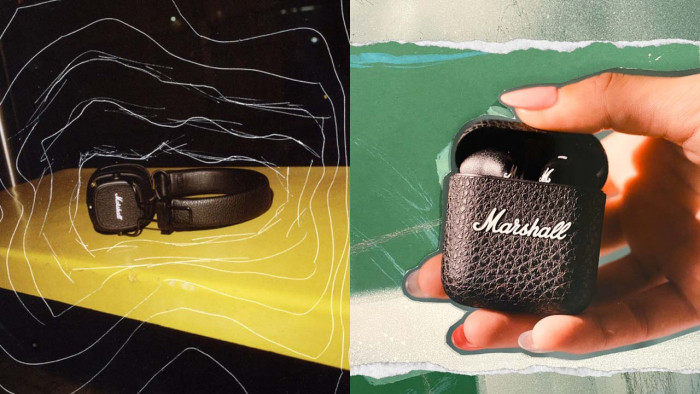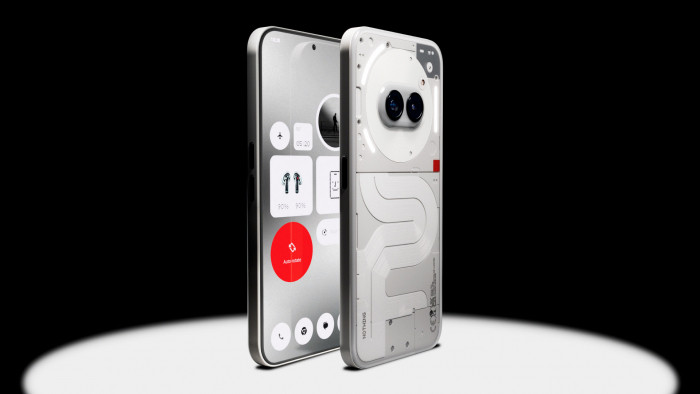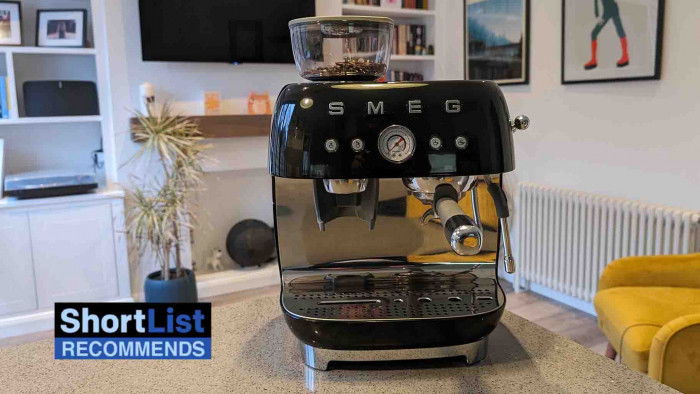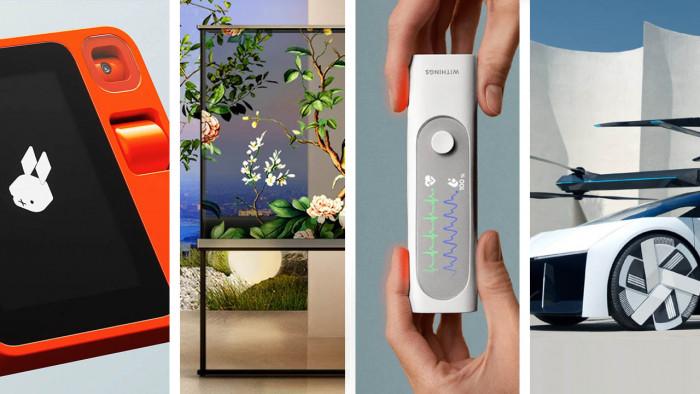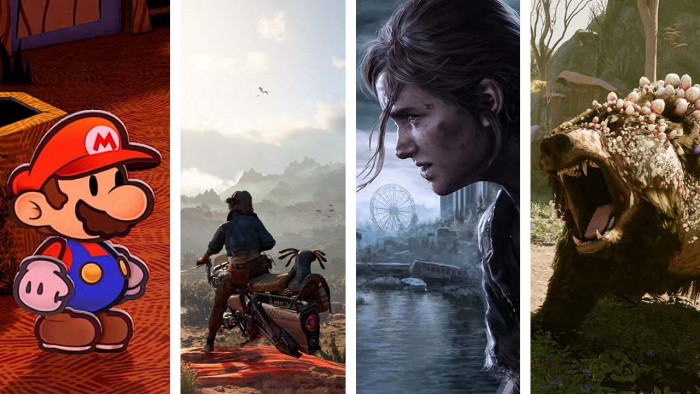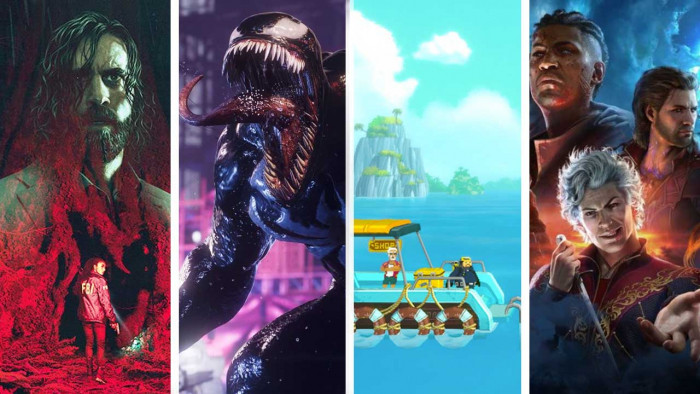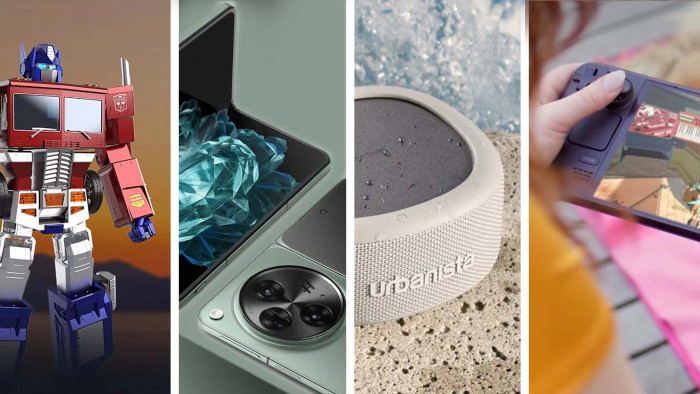This is the year entertainment gets inside your head. David Cornish takes a 360-degree view of the VR explosion
It’s finally happening. Virtual reality, the promised land of home entertainment that was always more of a mirage – the entertainment nirvana, glimpsed in the grained sci-fi of 1992’s The Lawnmower Man, enshrined in the dreams of a generation by Star Trek’s holodeck – is about to arrive in your living room. For real. Probably.
In 2016, a new era of immersive media will be beamed into your eyeballs by a range of high-tech goggles: intense video games; better-than-live performances from theatres and gig venues; even enhanced pornography. But, after so many false dawns, how to convince the public that there's substance to the virtual hype?
Get that right, and a virtual revolution will begin.

FROM VIRTUAL TO REALITY
The road to this quandary began in 2012 with a Kickstarter project set up by Palmer Luckey. His aim: to create about 100 affordable VR headsets superior to previous generations. Four months later, with $2,437,429 of people’s money backing his ambitions, the 20-year-old had proved there was considerable consumer interest in mucking about in three-dimensional, virtual worlds. In March 2014, Facebook spent $2bn acquiring Luckey’s company Oculus and its Rift headset.
The man who splashed that cash, Mark Zuckerberg, outlined his VR vision. “Immersive gaming will be the first,” he wrote on his own profile. “...but this is just the start. After games, we’re going to make Oculus a platform for many other experiences. Imagine enjoying a courtside seat at a game, studying in a classroom of students and teachers all over the world or consulting with a doctor face-to-face – just by putting on goggles in your home.”
The stage was set: if gamers backed the first wave of VR devices, then bigger, bolder ideas would follow. The gaming industry, today, appears optimistic.
“Everything is new again,” says Adam Orth, creator of zero-gravity adventure Adr1ft – one of Oculus Rift’s 30 launch titles. “When you design for VR, you have to rethink everything from the ground up. Things that you’re totally used to doing, like simply grabbing an item or going through a door – how do you make that make sense for someone with this thing attached to their face?”
ENTERTAINMENT 2.0
It’s a design challenge that’s set the industry’s creative minds ticking: in addition to the Rift’s offerings, the HTC Vive launched this month with more than 60 games, while the PlayStation VR (arriving in October) has more than 50 games in the pipeline. From space combat sims to tabletop strategy quests, VR is set to have an impact on a par with Nintendo’s 100-million-selling motion-controlled Wii experience of 2006. Once gamers have introduced VR headsets to their homes, the virtual horizon can expand into untested territory.
British company MelodyVR is one new entertainment business banking on this uptake. Providing 360-degree immersive videos of live gigs, it aims to be the VR equivalent of iTunes.
“What we’re providing people with is teleportation and time travel,” says co-founder Anthony Matchett. “Say you want to be at a festival but can’t afford it, or it’s sold out. Our product allows people to feel that they’re present.”
The company will position custom-built camera rigs around live acts – from centre stage to the middle of the crowd – so viewers in their living rooms can see more of a gig than someone stuck at the back of the mob. With plans to charge £5 to £10 to watch a show, MelodyVR could herald a serious change in the landscape of live music.
“We’ve been filming for the past year with 200 different artists from every genre,” says Matchett. “They’ve all loved it – artists like The Who get to view their own performances in a way they’ve never previously witnessed. It gives you a feeling of presence, something totally different to watching it on a TV or laptop.”
It’s a new world, and one that organisations will need to understand if they’re not going to make some very expensive mistakes or look horribly out of touch. See social media for examples of how brands can get a new medium disastrously wrong.
“Charities are a very interesting case,” says Henry Stuart, CEO of Visualise, which has been helping a range of brands get their heads around (and around) this new space. “They’ve grasped the true power of VR, to allow emotional connections – a branch of the industry is known as ‘Empathy VR’. We’ve been working with Médecins Sans Frontières to tell the migrant story, shooting content in the countries people have been leaving or flocking to, such as Greece, Lebanon and South Sudan.”
READY FOR YOUR CLOSE-UP
Stuart is buoyed by VR’s initial success – both the Oculus Rift and HTC Vive sold out their pre-orders, while more than 25 million apps have been downloaded for Google’s low-cost Cardboard headsets for smartphones – but the virtual revolution won’t be complete by the close of 2016.
“The consumer market is still not established,” says Stuart. “It’s going to take these devices being in every home, the games industry bringing out ‘killer’, must-have games and behavioural changes for this to be a truly transcendent medium.”
Not everyone thinks the first must-have moment will emerge from gaming. A market with a seasoned history of cementing new technology platforms into the mainstream – including VHS, Blu-ray and web streaming – could yet prove to be the ‘killer app’: pornography.
“Every industry is looking into VR but, at this point, adult is the only industry with a proven business model.” That’s the view of Todd Glider, CEO of BaDoink, currently the largest producer of adult virtual-reality content.
“Because it’s so starkly different from conventional adult video, it’s causing a bit of a renaissance in production. The starlets are excited because it requires a different type of engagement with their scene partners, a different choreography. The shooters are excited because there is so much experimentation involved.”
Since BaDoink launched in July 2015, each of its new videos has been downloaded 1,500 to 2,600 times per week – accessed largely by users with basic, smartphone-driven headsets. With the arrival of more serious gear, that traffic will only grow.
REALITY CHECK
So, the content is on its way, but can the hardware back it up? Or will virtual reality head to the same tech graveyard as Google Glass and 3DTV?
It’s a danger JB McRee is only too aware of. Senior manager of product marketing for the HTC Vive, he’s working to ensure customers are happy with the £689 headset billed as the closest thing to Star Trek’s holodeck – it has sensors that allow wearers to explore virtual spaces in a ‘stage’ 5m across.
“With the category in its infancy, it’s critical that the first products landing in consumers’ hands deliver,” says McRee. “If early products fail to meet the experience bar, we’ll all have an uphill battle.”
At present, the price tags and the top-spec PCs required to run the sets limits adoption. For many, the PlayStation VR presents this year’s real groundbreaking moment, but even that will cost £349.
However, as with all fledgling tech, the headsets will only get better – and cheaper. The next models are being plotted, sporting absurdly high 8K resolution displays that make individual pixels indiscernible to the human eye, while the eye-tracking technology of Tobii will also make the next generation of headsets even more intuitive. Rather than spinning your head to survey a virtual world, a flick of a pupil can change your view. This improved focus will help reduce the power needed to run displays, making the headsets smaller, lighter and friendlier to wear in public.

BEYOND THE LIVING ROOM
So where could new, lightweight, less obtrusive technology take us? As Zuckerberg outlined in that Facebook post, entertainment is just an introduction to virtual reality – the readily digested hors d’oeuvre before a feast of life-changing applications. He didn’t sink $2bn into Oculus in order to make FarmVille a little more immersive.
“We really believe that Oculus and VR and AR are the next platform of computing to emerge,” says Jay Parikh, Facebook’s vice president of engineering. “We went from phones and TV to computers, laptops, smartphones. This is the next step.
“Imagine that rather than trying to hold a business meeting over this square window on a laptop with everyone trying to squeeze in, you could be in a room together, no matter where you are in the world, and that you could all work on the same virtual whiteboard, writing up ideas together, building models. That would introduce a whole new level of collaboration.”
Oculus founder Luckey ruffled the feathers of teachers the globe over when he took to the stage of the Web Summit 2015 in Dublin to declare: “Classrooms are broken. Kids don’t learn the best by reading books.”
Some might say that, judging by his grammar, Luckey could do with reading a couple of books himself, but his suggestion that school trips might one day be to ancient Rome is surely accurate. From the Colosseum to Cape Town, VR headsets offer a level of exploration no text book could hope to match.
THE NEW WORLD
Almost every organisation or profession that gets its face into a VR headset seems to find an application for the new tech. Visualise has been working with tourism boards to create virtual showpieces: why not take a tour of your potential holiday destination before you spend hundreds of pounds travelling there? Sketchfab, launched in 2012 as the ‘YouTube of 3D models’, has emerged as a new platform for architects and designers to demo their work – building vast spaces without the cost of, well, building vast spaces.
The possibilities are there for VR to boggle us with goggles in almost every facet of life. It won’t be long before we can have first dates in virtual bars (in a virtual Barbados), commute to work in the Flintstones’ car or do dancercise with Anne Boleyn.
“It’s hard to imagine where VR will go,” says Stuart. “The evolution of this stonkingly powerful medium might sound quite frightening – and there will no doubt be people who are too immersed or obsessed with these ‘other worlds’ – but for the vast majority of us this will be a change to our way of life.”
Until then, a wealth of brow-raising experiences are waiting to be accessed with 2016’s crop of headsets, from the cut-out-and-keep to the keep-at-home-and-check-contents-insurance. The only question is, will people take the plunge?
“The average person needs to know that virtual reality must be experienced to be believed,” says BaDoink’s Glider. “That’s the hard part. No amount of talking about it does it justice. You’ve got to put the goggles on.”


